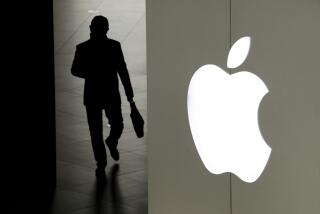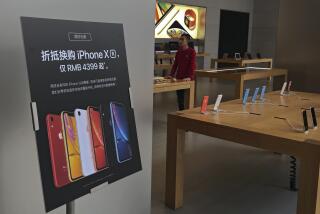Apple reversed its iPhone slump. But what’s next?

Apple has snapped out of the first sales slump in the iPhone’s decade-long history, although the modest upturn doesn’t mean that it has broken out of its innovation funk.
If anything, the numbers Apple released Tuesday highlight the company’s growing dependence on the iPhone, whose sales tower above Apple’s other offerings. The company hasn’t managed to come up with another breakthrough product since its chief visionary, Steve Jobs, died in 2011.
Meanwhile, Apple’s rivals have been rolling out new products in other promising fields such as augmented reality, virtual reality and artificial intelligence. Apple trails in those areas, although many analysts believe the company may try to catch up with products featuring those trendy technologies this year.
Selling more iPhones has been getting tougher as more people hold on to older models for longer periods and competitors such as Samsung and Google entice customers with sleek devices running on Android software. The trend led to three consecutive quarters in which iPhone sales fell compared with the prior year, causing Apple’s total revenue to sag as well.
Apple bounced back in the quarter ending in December, buoyed by a positive response to the late September release of the iPhone 7 and 7 Plus. That device featured a better camera, which drew rave reviews, and no jack for headphones, which irked some consumers and befuddled others.
Apple shipped 78.3 million iPhones in the latest quarter, a 5% increase compared with a year earlier. It benefited from a year-end quarter consisting of 14 weeks, one more than the previous-year period. If not for the calendar quirk, the iPhone sales slump might not have ended. Apple sold an average of 5.6 million iPhones per week in the latest quarter compared with 5.7 million iPhones per week a year earlier.
The Cupertino, Calif., company also was helped by a recall of Samsung’s Note 7 phones, which were plagued by battery fires.
About 17% of all iPhones are now 7 models, according to the research firm Localytics. Most of the rest are older iPhone 6 or iPhone 5 models. Apple could have sold more iPhone 7 Plus phones, which boast a bigger screen and an extra camera, but the company misgauged demand and didn’t make enough to meet customer demand, Chief Executive Tim Cook said during a conference call.
IPhone sales could slip yet again. Anticipation is building for the expected release of a 10th-anniversary iPhone of some sort this summer or fall. Many smartphone owners could hold off until they get a good look at this year’s iPhone, says Daniel Ives, a senior vice president for the mobile research firm Synchronoss Technologies.
“It’s like a drum roll while everyone waits for the curtains to roll back to unveil the next iPhone,” Ives says. “There is a lot of pent-up demand out there, so this has the potential to be a game changer.”
The iPad, a tablet that became a smash hit after its 2010 debut, remains mired in a three-year sales slump, further magnifying the iPhone’s importance to Apple. The company shipped 13.1 million iPads in the last quarter, a 19% drop from a year earlier.
Propelled by the iPhone, Apple Inc.’s revenue edged up 3% to $78.4 billion in the quarter. But its profit dipped 3% to $17.9 billion.
It was Apple’s biggest quarterly revenue in its 40-year history, but it doesn’t erase the question that has nagged Tim Cook since he succeeded Jobs as CEO nearly 5 1/2 years ago: What’s next?
Cook had high hopes for Apple’s smartwatch when he unveiled it in 2014, but that gadget remains more of a novelty.
In interviews, Cook hinted Apple is exploring opportunities in augmented reality, which casts holograms and other digital images onto the real world around you. Apple also has been buying companies and hiring engineers specializing in artificial intelligence.
BGC Financial analyst Colin Gillis believes Apple already has wasted too much time trying to figure out what to do next.
“When your iPhone juice runs down, you should already be ready to ramp up your next product,” he says. “What have we gotten after all the billions that Apple has spent on” research and development?






